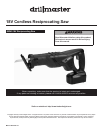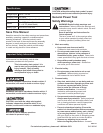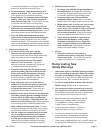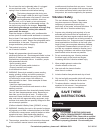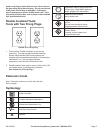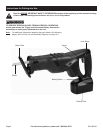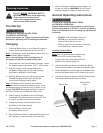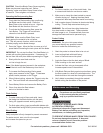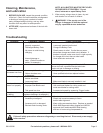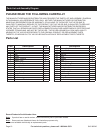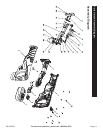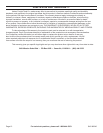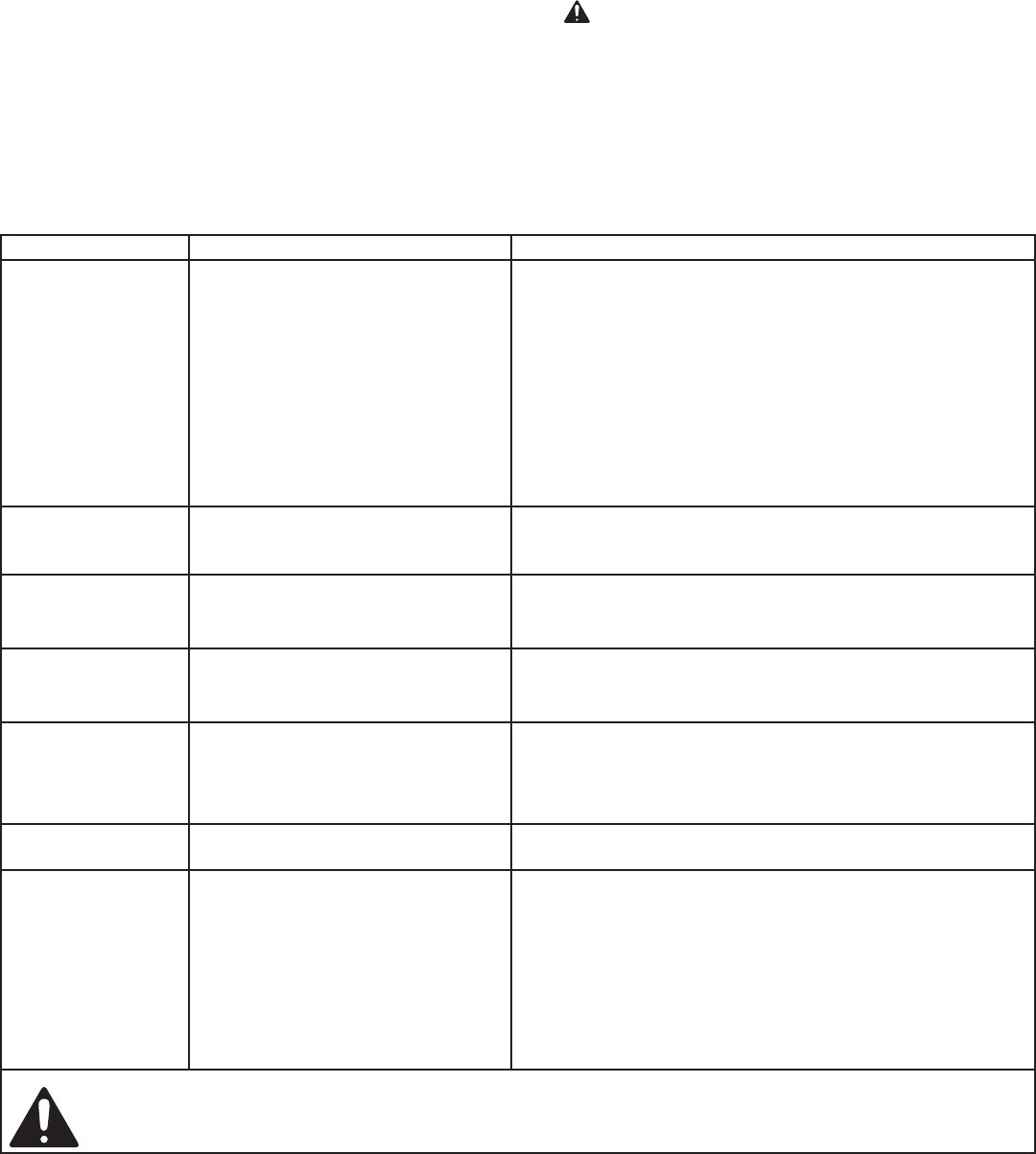
Page 9For technical questions, please call 1-800-444-3353.SKU 68240
Troubleshooting
Problem Possible Causes Likely Solutions
Tool will not start. 1. Battery pack not
properly connected.
2. Discharged Battery Pack.
3. No power at outlet during
charging.
4. Internal damage or
wear. (Carbon brushes or
switch, for example.)
1. Make sure that the battery pack (sold separately)
is securely inserted into the tool.
2. Charge the Battery Pack.
3. Check power at outlet. If outlet has no power,
disconnect charger and check circuit breaker. If
breaker is tripped, make sure circuit is right capacity
for charger and circuit has no other loads.
4. Have technician service tool.
Trigger will not
turn off.
Tool needs service check. Immediately remove battery pack from tool. Do
not use tool until a qualied service technician
checks out tool for damage or defects.
Performance
decreases over time.
1. Accessory dull or damaged.
2. Carbon brushes worn
or damaged.
1. Keep cutting accessories sharp. Replace as needed.
2. Have qualied technician replace brushes.
Cut line is irregular. 1. Bent, cracked, or
broken saw blade.
2. Loose saw blade.
1. Replace saw blade.
2. Make sure blade is securely installed in tool.
Saw doesn’t cut or
doesn’t cut properly.
1. Dull Saw Blade.
2. Improper Saw Blade used.
3. Tool speed too slow.
1. Replace saw blade.
2. Use metal saw blades for cutting metal and
wood saw blades for cutting wood.
3. Increase tool speed by squeezing Trigger harder.
Excessive noise
or rattling.
Internal damage or wear. (Carbon
brushes or bearings, for example.)
Have technician service tool.
Overheating. 1. Forcing tool to work too fast.
2. Accessory misaligned.
3. Accessory dull or damaged.
4. Blocked motor housing vents.
1. Allow tool to work at its own rate.
2. Check and correct accessory to fence
and/or table alignment.
3. Keep cutting accessories sharp. Replace as needed.
4. Wear ANSI-approved safety goggles and NIOSH-
approved dust mask/respirator while blowing
dust out of motor using compressed air.
Follow all safety precautions whenever diagnosing or servicing the tool. Disconnect power supply
before service.
Cleaning, Maintenance,
and Lubrication
1. BEFORE EACH USE, inspect the general condition
of the tool. Check for loose hardware, misalignment
or binding of moving parts, cracked or broken
parts, damaged electrical wiring, and any other
condition that may affect its safe operation.
2. AFTER USE, wipe external surfaces of the tool with
clean cloth.
NOTE: Ni-Cd BATTERY MUST BE RECYCLED
OR DISPOSED OF PROPERLY. Do not
short, incinerate or open Battery Pack.
3. When storing, always store in clean, dry and
safe location out of reach of children.
4. WARNING! If the supply cord of the
charger is damaged, it must be replaced
only by a qualied service technician.



